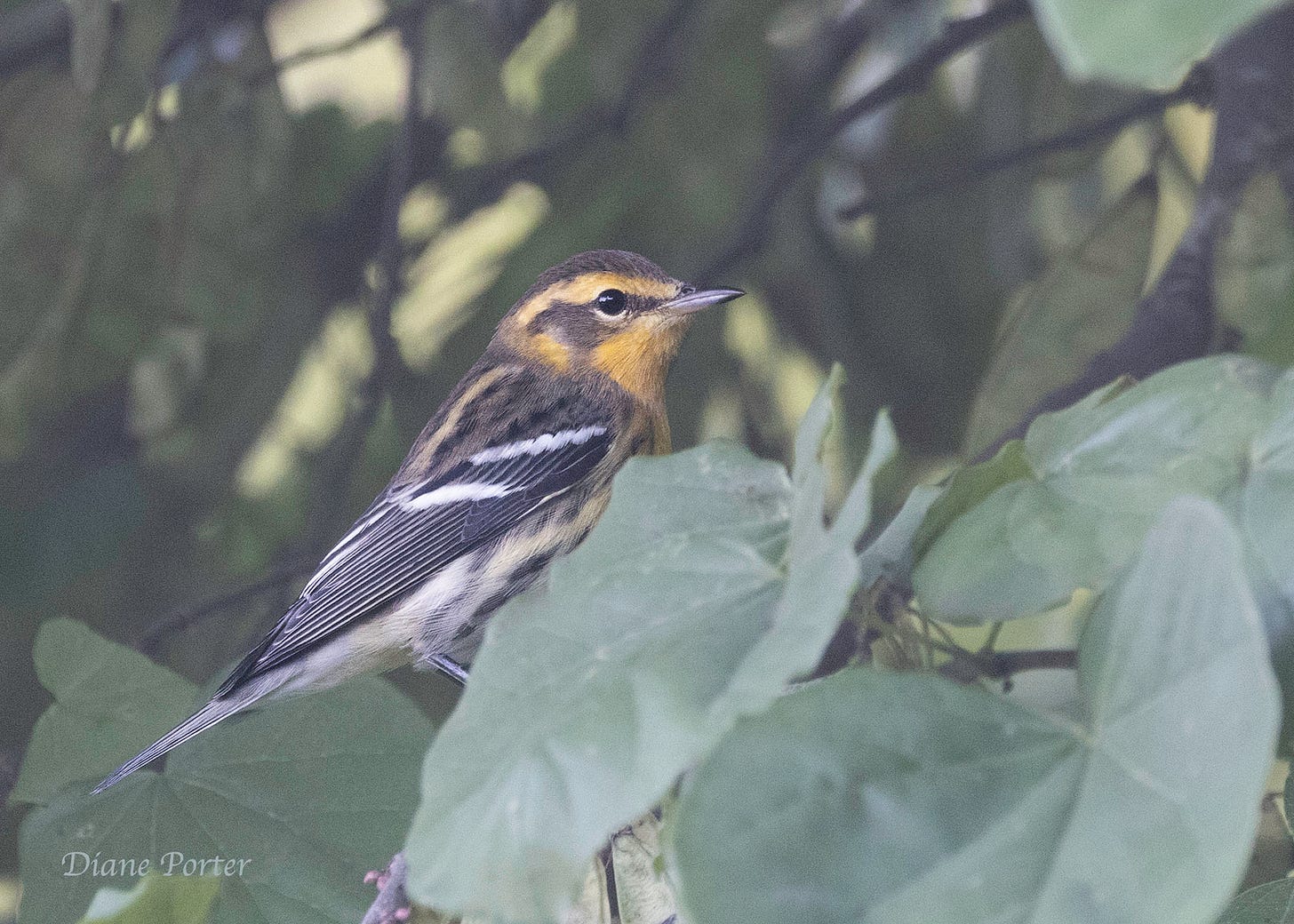

Discover more from My Gaia
Throat the color of fire coals. Waaay up in the tops of the trees. In most of eastern North America, we can glimpse him for only a few weeks out of the year.
He’s a Blackburnian Warbler.
Certain field marks make him unmistakable.
Intense orange eyebrow
Small orange crescent below the eye
Dark triangle on the cheek, pointing down
In Iowa, I can’t go out any old time and look for Blackburnian Warblers. I have to catch them as they’re migrating through, in May or September.
The yearly plan
Winter ~ For over half the year, Blackburnian Warblers live in South American. Many winter in the forests of the Andes Mountains. However, they do not breed there.
Spring ~ In spring, they all migrate to northern North America. On their way, they travel through the eastern states. They do not linger. They are intent on reaching the boreal forests, where they will nest in conifer trees.
Late summer / fall ~ Once the young are mature, all the Blackburnian Warblers head south again.
Migration math
It is an almost unimaginable journey. Each Blackburnian Warbler weighs around 1/3 ounce. Less than an average strawberry. Yet some migrate as much as 5000 miles each way.
They migrate only at night. By day they rest. And eat!
All the energy to fuel their migration is packed into the muscles and fat of the tiny body. Whatever they spend in flight they must replace with food the next day.
On both the spring and the fall migration, they fly across the Gulf of Mexico. It’s a night-long journey of 500-600 miles. No stops for rest or snacks! When they make landfall, they are very hungry. Immediate food is a matter of survival.
They forage mostly up high in trees. Caterpillars are among their favorite foods, but they’ll take beetles, flies, spiders, aphids, and moths, too. Most of this food is gleaned from the leaves and twigs of trees.

Lovely Lady Blackburnian
The female Blackburnian Warbler has the same face pattern as the male, but her colors are muted. Her throat is buffy rather than orange. A wide, pale eyebrow replaces the male’s orange one. A tiny crescent below the eye has the same shape as the male’s, but hers is buffy, not orange.
A dark triangle on the cheek helps clinch the identification.

Blackburnian Warblers are spectacular. In Fairfield Iowa they are found wherever there are trees. Mornings are best. Check out a local park, nature area, or your own backyard.
If you don’t see a Blackburnian Warbler, you’ll probably see one of the many other warblers that are now passing through our September woodlands.
Happy birding!
A gallery of warblers
These warblers are some you’re likely to see in Iowa in September.









Row 1
Common Yellowthroat
Black-and-white Warbler
Wilson’s Warbler
Row 2
Yellow-rumped Warbler
Northern Parula
Palm Warbler
Row 3
American Redstart
Chestnut-sided Warbler
Magnolia Warbler
















Holy wow, what a journey these little lives are. There’s something so touching to me in thinking of this migration path. Thank you, Diane.
Thanks Diane for introducing us to the wonderful bird!. It is a delightful read with fascinating facts. I’m truly touched by the Blackburnian Warbler’s long migration journey. These tiny creatures pull off an almost impossible 5,000 miles (about the same as a round trip from NY to SF) of night flight, what amazing grit and stamina they must have!